In a time when cars come in all kinds of shapes and sizes, covering almost every need, there will always be a spot for the classic hatchback — a car with a top-hinged back door that opens wide to show a boot that’s usually easy to load. The best hatchbacks mix practicality, quality, and fun driving.
Hatchbacks don’t always have flat rear ends — just look at the Skoda Octavia, which looks more like a saloon, but the back window still lifts up with the boot. Estate cars aren’t included, because at some point someone decided that a long hatchback doesn’t count as a hatchback, and most people seem to agree.
While hatchbacks aren’t as popular as they used to be because SUVs have become more common, they’re still enough car for most families. They often give you just as much room inside and in the boot, while using less fuel than taller SUVs. They usually cost less than SUVs, too, so you can often get a better-equipped hatchback for the same amount of money as a similar SUV.
Even though you don’t sit as high up, hatchbacks are often more enjoyable to drive because they sit lower to the ground and weigh less. Unlike saloon cars, hatchbacks can carry large items easily because of their wide openings.
Also Read: 10 Best Cars That Balance Horsepower With Long-Term Value
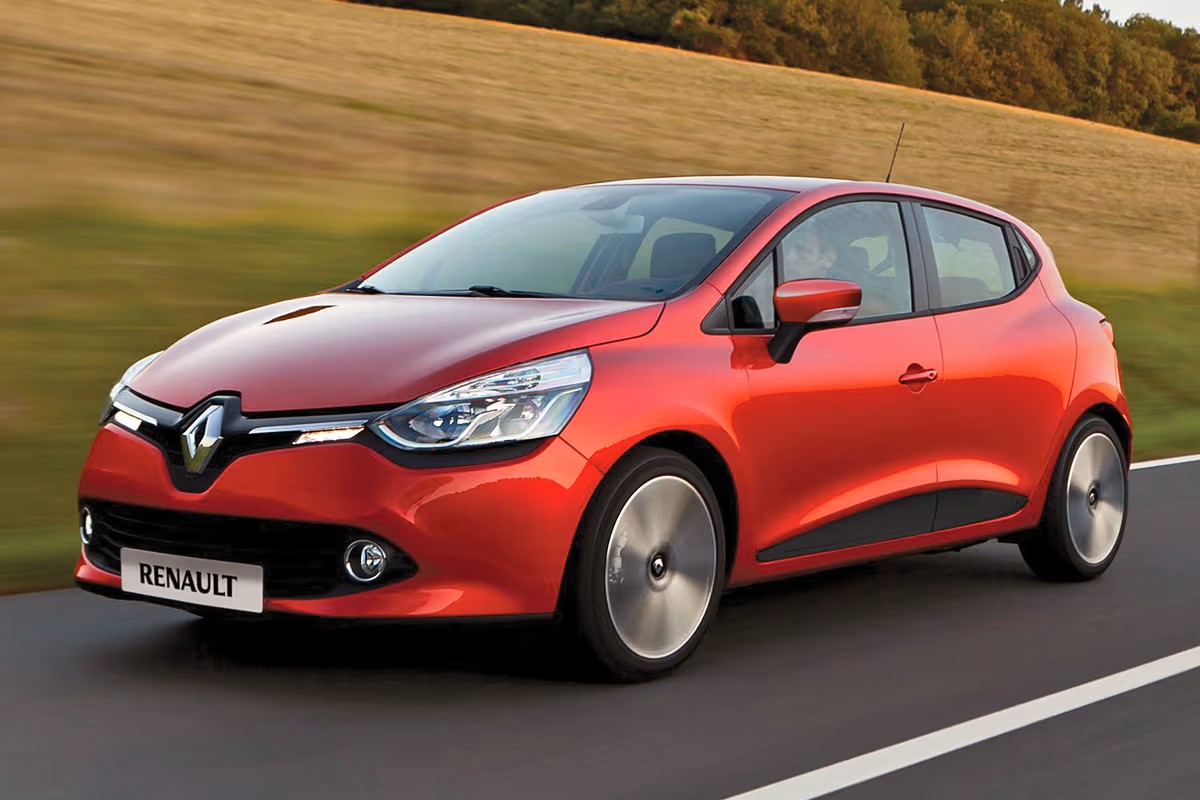
Renault Clio
The Renault Clio is a great car that combines a high-quality interior, good driving feel, and a decent-sized boot in a small and stylish body. It’s so good that it was praised in the Smart Spender category of the 2025 Carwow Car of the Year Awards.
The Clio really is a nice-looking car. Its newest version has slim, sharp headlights and arrow-shaped LED daytime running lights at the front. A sporty line down the side and bright LED lights at the back add to its stylish appearance, giving it a look that stands out from other similar cars.
Renault has put just as much thought into the Clio’s interior as the outside. The dashboard has a cool design, with a long air vent across it and a tall infotainment screen that works well.
The air-con controls are clearly marked and simple to use. The materials you touch most often feel high quality and soft. There are a few hard plastics hidden in some spots, but that’s normal for a small hatchback.
People in the front seats will have plenty of space to get comfortable and lots of places to store their things. Back seat passengers might find legroom a bit tight. The upside of having less space in the back seats is that you get a big boot. The Clio has a roomy 391-litre boot. If you go for the hybrid version, you lose 90 litres, but 301 litres is still more than usual for a car this size.
The hybrid engine is the best option, with enough power to get you moving quickly and a smooth automatic gearbox that helps in stop-start traffic. The petrol engine is a better choice if you’re watching your spending and don’t mind shifting gears yourself, but it doesn’t save as much fuel as the hybrid.
Driving around town is easy in the Clio because it has light steering and good front visibility. But the small rear windows and not-so-great rear-view camera make parking a bit tricky. Driving on motorways doesn’t feel as smooth as in some other cars, and curvy roads aren’t the most exciting, but the Clio is still a very solid pick.
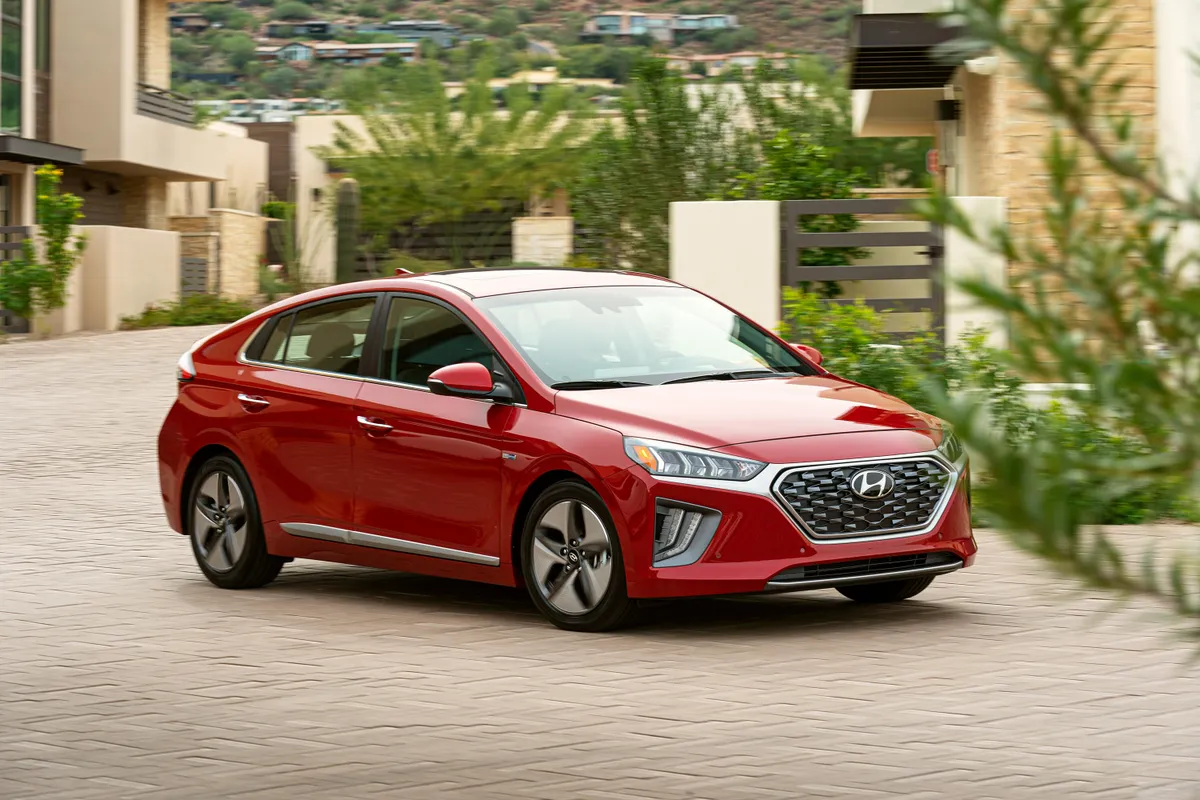
Hyundai Ioniq 5
The Hyundai Ioniq 5 stretches the idea of what a hatchback can be. Technically, it’s a hatchback, but it’s about the same size as an SUV and sits higher off the ground than most of the other cars mentioned here.
Its design is bold too, with a mix of retro and futuristic styling that’s very different from anything else on the road. The headlights and taillights look like glowing pixels, and there are sharp lines and angles everywhere you look — and it all comes together in a great way.
The inside is nearly as eye-catching as the outside. It has a simple, modern look, with two big 12.3-inch screens across the dashboard. The layout is interesting, with the air conditioning panel sloping upward to meet the infotainment screen. The cabin feels light and spacious, almost like a living room.
The front seats are very comfortable and can be adjusted in many ways. People in the back seats get plenty of head and leg space, too. Some of the materials inside don’t feel as nice, and the gear selector behind the steering wheel has a strange shape, but even so, the Ioniq 5’s interior is very impressive. The boot has a good size at 520 litres, but it’s not very deep.
On the road, the Ioniq 5 is calm and pleasant to drive. The steering is light, which makes for a smooth and relaxed experience. That helps a lot when you’re driving through town, especially in tight areas, and the great camera system and clear visibility help too. The suspension is firmer than in some other cars, so rough roads can feel a bit bumpy.
It feels better on motorways where the suspension becomes smoother at higher speeds, making longer drives more relaxing. Hyundai’s lane assist and adaptive cruise control features work very well. The standard version isn’t very exciting to drive, but the sporty Ioniq 5 N is a lot of fun on twisty roads.
There are two battery options. The bigger one gives you up to a claimed 354 miles on a full charge — and Hyundai is usually pretty accurate when it comes to how far their cars can go, so with calm driving, you can get close to that range.
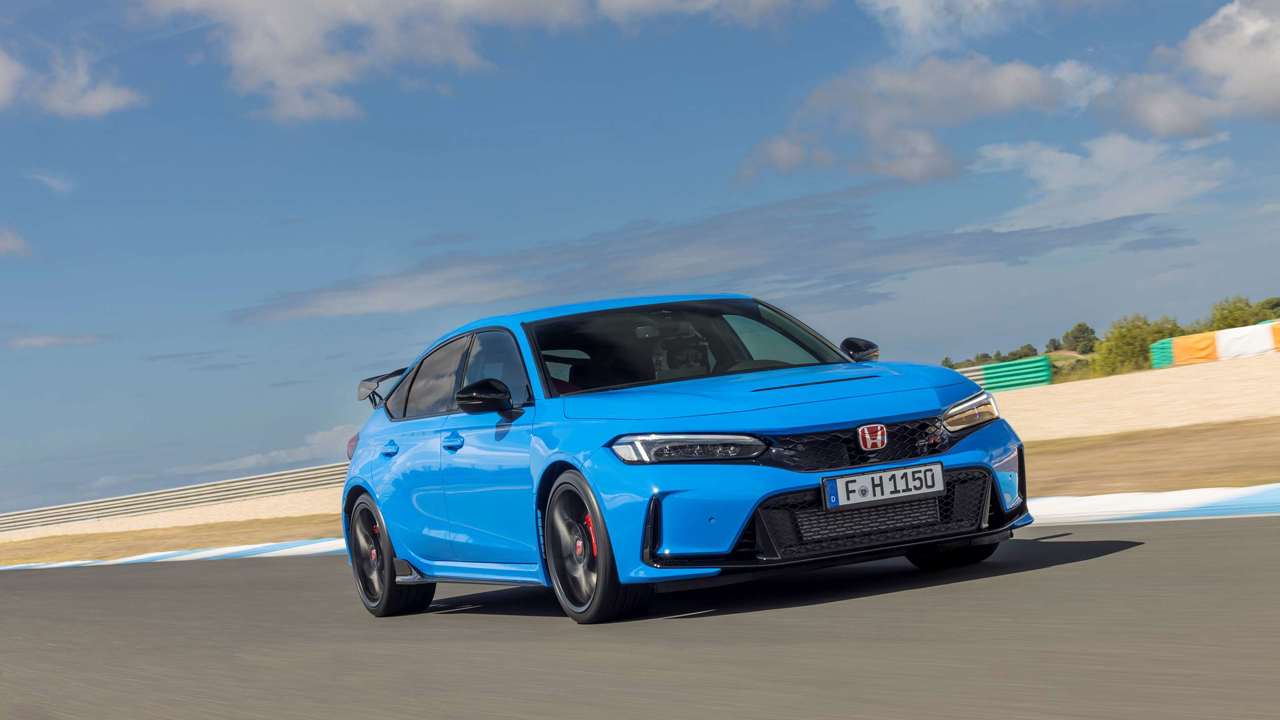
Honda Civic
The Civic name has been linked with family hatchbacks for over 50 years. While other brands try to stand out with unusual features, Honda has kept things simple, creating another trustworthy, comfy, and fun-to-drive hatchback.
It’s a good-looking car, with smooth lines and a balanced design. The wide, hexagon-shaped headlights don’t look too bold or too plain, and the sloping roof gives it a sporty edge when you compare it to cars like the VW Golf or BMW 1 Series.
Inside, the Civic stands apart from many of its rivals with a neater, simpler layout than what you often find in German or Spanish hatchbacks. A honeycomb pattern stretches across the dashboard, hiding the air vents, and there’s a plain rectangular infotainment screen above it.
What really stands out in the Civic is how nice the materials feel. There are soft, high-quality surfaces where it matters and a set of clearly labeled, solid-feeling buttons for the air conditioning under the center vents. Some other cars might have flashier interiors, but the Civic’s interior space feels calm and welcoming.
Both front and rear passengers have lots of legroom and handy places to store their things. Headroom in the back is a bit limited because of the sloped roof, but the boot is huge. At 410 litres, it’s bigger than most cars of this type. If you get the version with a Bose sound system, the subwoofer takes up a small amount of space, but it doesn’t make much of a difference.
The Civic isn’t just practical — it’s great to drive too. There’s only one engine, a 2.0-litre petrol hybrid, but that’s actually a good thing because it gives you a nice mix of power and fuel savings.
It handles city roads really well, smoothing out bumps and potholes with ease. It’s just as comfortable at high speeds on motorways, and it’s enjoyable on twisty roads too. The steering feels just right, and the car stays steady in corners without leaning too much.
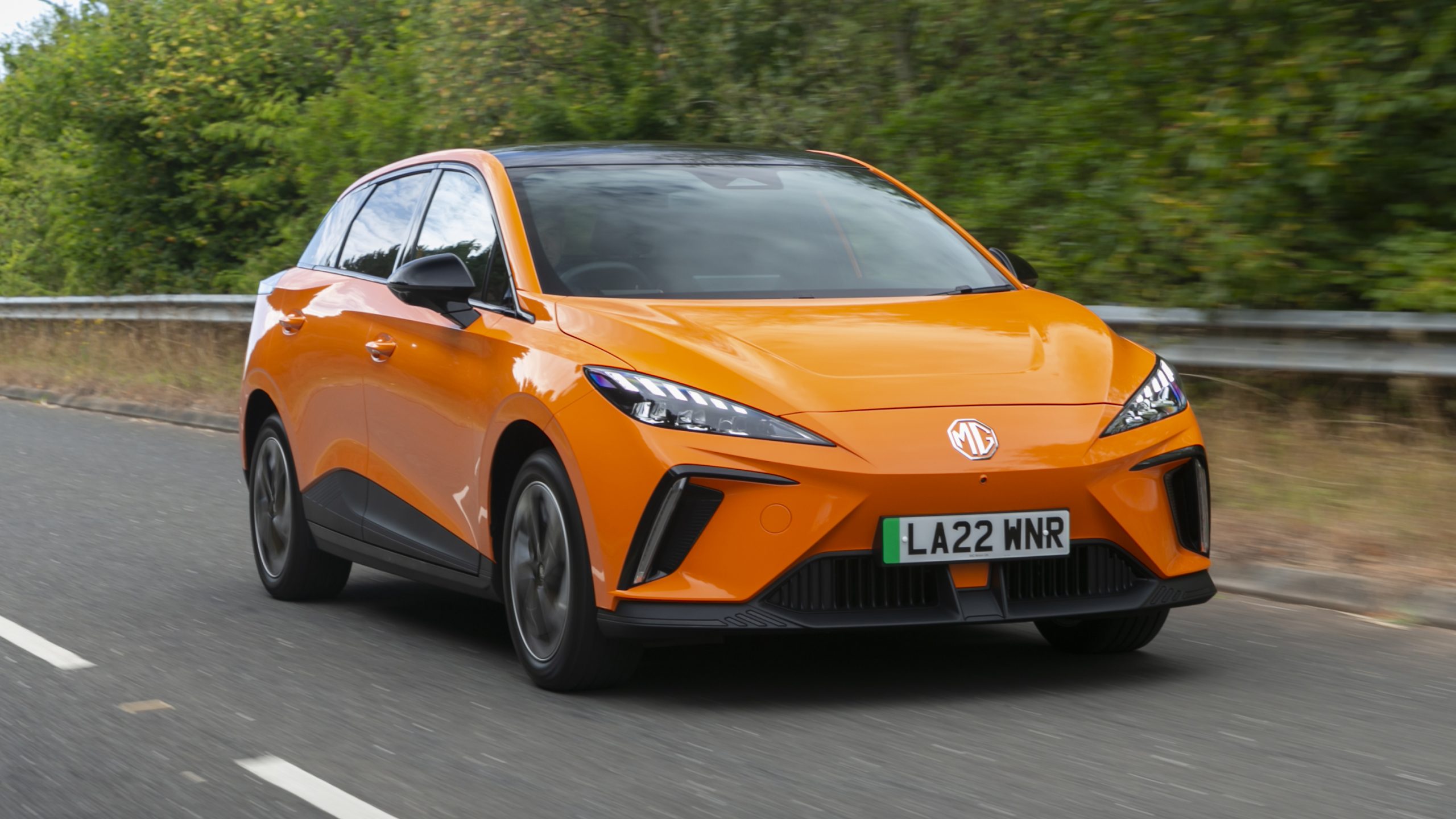
MG4
The MG4 got a lot of attention when it first came out because it had a very low starting price for an electric family hatchback, but it quickly showed that it’s one of the top small electric cars you can get.
It has a great design — very modern with sharp headlights, clean lines, and smooth curves all around. Bright colour options make the MG4 stand out, and the inside gives a similar feeling.
It’s not as bold inside, but the MG4’s cabin still has a very clean and simple design. There’s a 10.3-inch screen floating above the dashboard, and the driver has a 7.0-inch display too. But both screens can be a bit tricky to use because the menus are crowded, and the response time is slow.
The materials used inside are just as good as in more expensive cars, and there’s lots of space in both the front and back, so passengers can sit comfortably.
There are two battery choices for the MG4. The basic version can go up to 218 miles on one charge. The long-range model can travel up to a claimed 323 miles, which is very good.
The MG4 feels best when driving in cities. It has soft suspension, clear visibility, and no engine sound, making it smooth and quiet when getting through narrow roads. Driving on motorways is comfortable too, although there is some noise from the road. Still, that might be fine for people who enjoy a more sporty feel, because the MG4 is a lot of fun to throw around on twisty country roads.
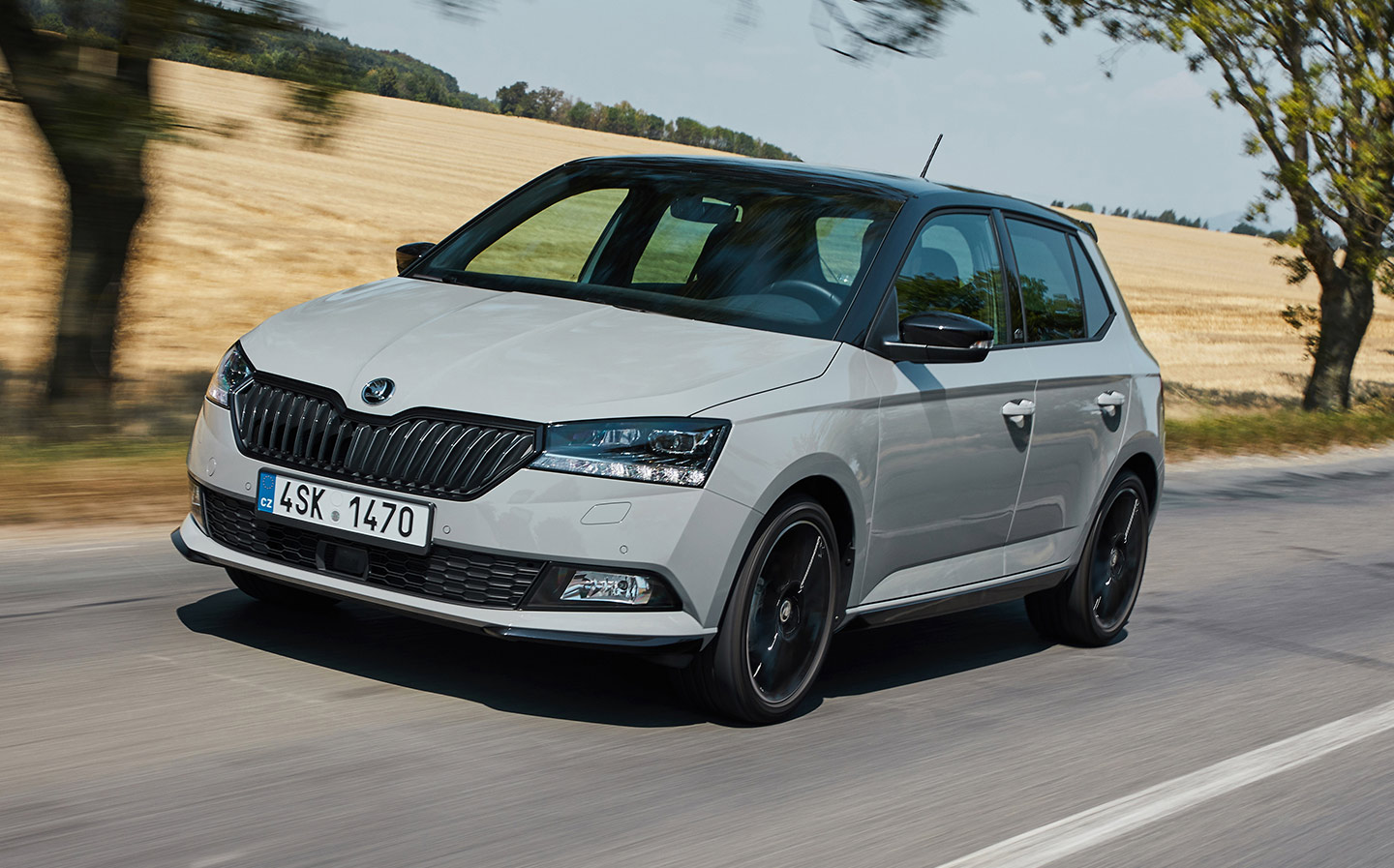
Skoda Fabia
Skoda has stuck to the traditional small car formula with the Fabia, keeping things simple and easy to use. It’s not especially exciting, but the Fabia fits a lot of space into a small car, and it’s very comfortable to drive.
The Fabia has a nice design without trying too hard. It’s not going to stand out much, and you might lose track of it in a car park, but it won’t bother anyone either.
The interior is well-made. There aren’t many soft materials, but some colour highlights help make the inside feel a bit more cheerful. The basic model has a 6.5-inch infotainment screen, but it’s better to go for the 8.0- or 9.2-inch screens on higher trims. Still, none of them responds very quickly to touch.
People in both the front and back have lots of room, more than in many of the Fabia’s rivals. The boot is a very good size at 380 litres, which is enough space for a few small suitcases or a big shopping trip.
There are no hybrid or electric engines offered in the Fabia. The petrol engines aren’t fast, but instead of speed, you get a very smooth ride. The suspension is soft, so it handles bumps in the road easily. It feels just as comfortable on motorways as it does in town. The Fabia doesn’t feel exciting on twisty roads, but it still has good grip and stays steady.

MG3
Another win for MG, the MG3 has changed from being a car you’d only buy if you were trying to save every penny, to one that’s actually a fun and appealing small car. It looks fresh both outside and inside, and it’s still priced well.
It’s not the most traditionally good-looking car, but the MG3 does have its own unique appearance with a wide front grille, sharp headlights, and angled lines down the sides.
Inside, the design is quite simple and easy to look at, with a few fun touches like bits of tartan fabric that add some personality. Still, it’s clear where MG has cut costs, because some of the materials feel very rough and cheap. While the general feel is similar to other cars in its price range, those scratchy plastics stand out in a bad way.
There’s a fair amount of space for people in the front and back seats, but the boot is on the small side at 293 litres. The back seats don’t split and fold down separately either, which is really annoying if you need to carry something big in the boot but still want someone to sit in the back.
The MG3’s hybrid system makes 191 hp, which is more powerful than most of its rivals. It gets up to speed on the motorway without much trouble, and it’s quick and easy to overtake slower cars on country roads. Around town, the electric help makes driving simple, although the engine does get loud when it turns on.
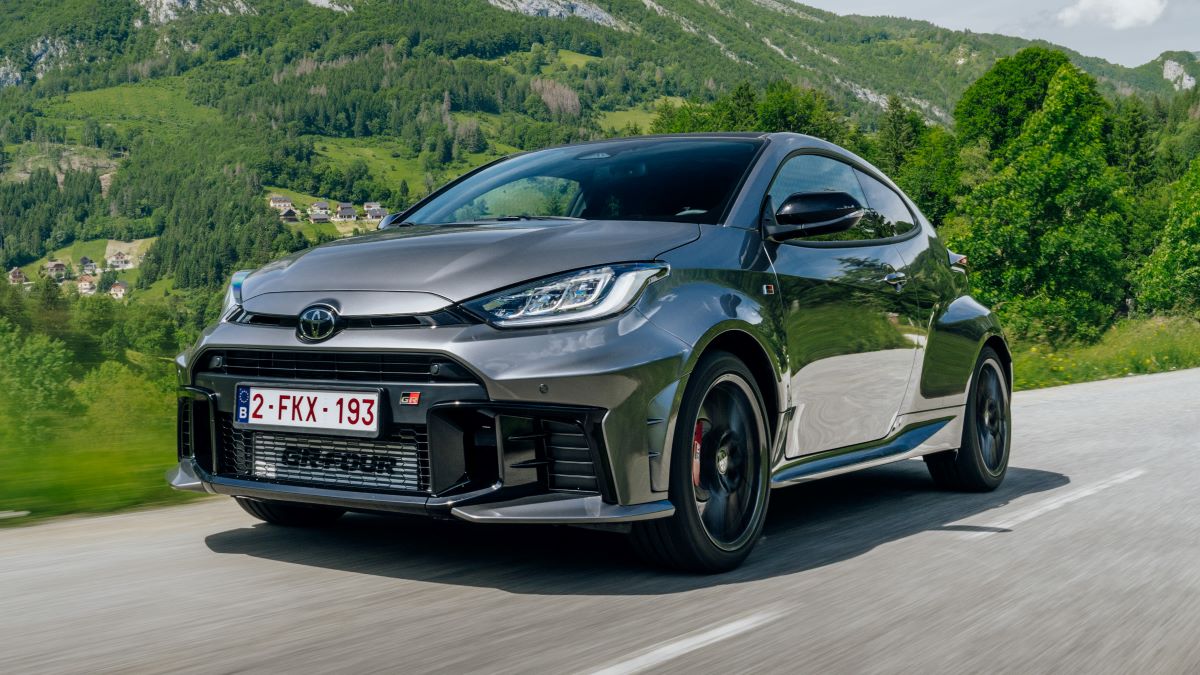
Toyota Yaris
Toyota has packed its hybrid technology into a small car that’s both fun to drive and good-looking, with the Yaris. The inside is clearly laid out, and there are some bold colour choices to help it stand out.
Sporty headlights, a dark front grille, and wide wheel arches give the Yaris more presence than most small cars like it, but the style doesn’t go too far or feel forced.
Inside, the design focuses on the driver, with the dashboard curving slightly toward you. There are bright colour accents around the cabin, but even with those, you’ll still notice how much plain grey plastic is used. It’s too bad that the inside doesn’t look as exciting as the outside.
The Yaris runs on a 1.5-litre self-charging hybrid system that works really well in the city. The CVT gearbox helps the car speed up smoothly, and the suspension does a good job of softening the rough bumps from potholes or uneven streets.
Driving on motorways is less relaxing because the Yaris doesn’t handle larger dips or bumps very well at high speed. But it’s still fun on twisty roads, since the car stays steady in corners and there’s plenty of grip to keep things under control.

Peugeot 208
Since it first came out in 2019, the Peugeot 208 has been known as one of the best-looking small cars you can buy. The latest update has made it even more stylish, without taking away any of the good things about the car.
Eye-catching cat-like LED lights on the front and back, a bold front grille, and a retro-style window shape all come together to make a car that really stands out, especially if you choose the version with different coloured roof and wheel arch details.
The inside of the 208 is just as impressive, with high-quality materials used throughout and a very unique design. The small steering wheel is something Peugeot is known for, as are the buttons on the dashboard that look like keys on a keyboard. But depending on how you sit, the steering wheel might block your view of the driver’s display.
Even though the inside looks great, the 208 feels a bit tight on space in both the front and back seats. The seats themselves are comfortable, and there’s a good 311 litres of space in the boot.
When it comes to driving, the 208 does a bit of everything well. The small steering wheel makes it feel quick to respond in cities and on country roads, even though it isn’t quite as fun to drive as a Mini Cooper. It still feels steady and secure when you’re on the motorway.
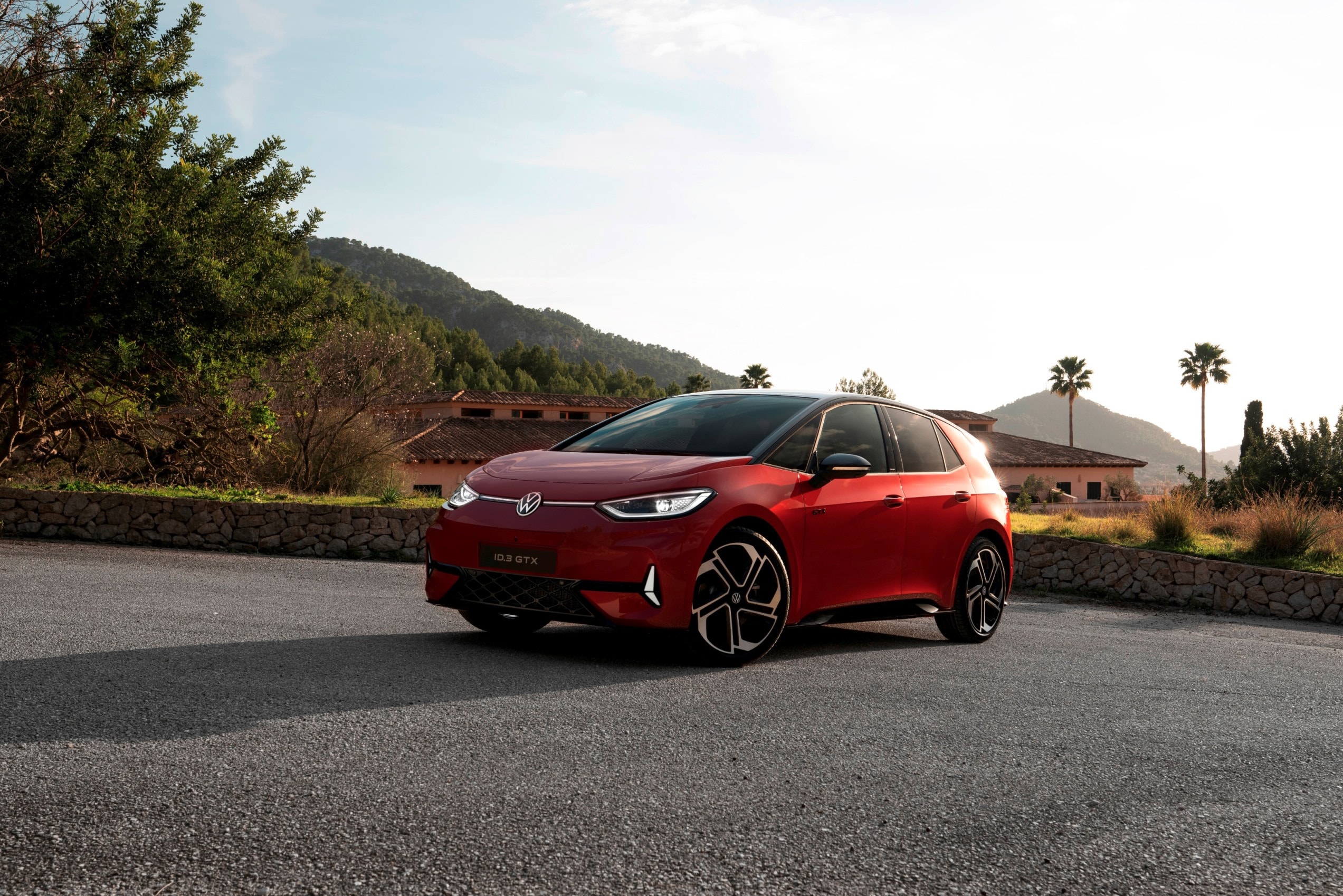
Cupra Born
Where VW is the all-rounder and Skoda is the sensible choice, Cupra is the edgy sibling of the bunch. The Cupra Born is the VW ID3’s sporty sibling, even if the Born’s silhouette is the same as the ID3, though it has aggressive, angular headlights and colour-contrasting copper trims all over the place to differentiate it from its German counterpart.
The inside is very similar, with cool materials that make the simple layout feel a bit more special. A 12.0-inch screen floats above the dashboard, and there’s a separate screen for the driver behind the steering wheel. The main screen can be slow to respond and sometimes freezes or crashes, which is annoying when you need the sat-nav.
Cupra gives you two battery options with the Born. The smaller one can go an estimated 254 miles on one charge, and the larger one can manage a claimed 352 miles. Both batteries can be fully charged at home overnight.
The Born doesn’t handle quite as sporty as its sharp looks might make you think, but it’s still enjoyable on a twisty road. It has enough power to pass slower cars and get up to motorway speeds with ease. It’s comfy to drive both at high speed and in town, although the suspension is firm and can bounce you around a bit over potholes.
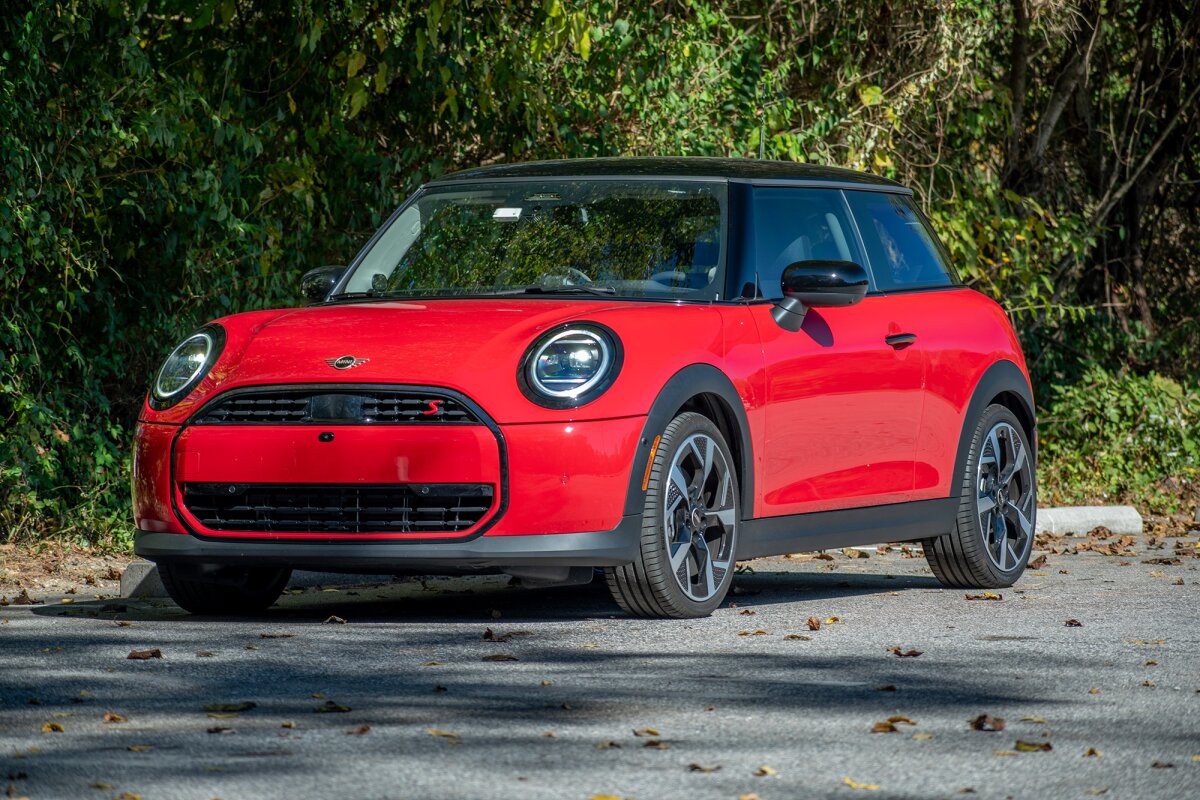
Mini Cooper
When it comes to hatchbacks, the Mini Cooper is one of the most well-known names. It still has a look that reminds you of the original Mini from 1959, but without trying too hard to be old-fashioned.
The newest Mini is the closest version yet to the original, with a smooth front that features large, round headlights. The regular versions look sleek and stylish, but if you want a louder, more aggressive Mini, the John Cooper Works versions come with sporty body parts.
Inside, the Mini continues with its retro feel. Most of the controls and the infotainment system are placed in a big round screen in the middle of the dashboard. There’s a small heads-up display for the driver, and the rest of the interior looks great thanks to clever fabric choices.
Also Read: 12 Sports Sedans That Outlast SUVs With Top Endurance
The Mini isn’t very practical. It’s best for two people sitting in the front. The back seats are cramped, and the 210-litre boot is only good for a small amount of shopping or a couple of carry-on bags.
Whether you go for the petrol or electric version, the Mini is fun to drive in the city. It feels quick and easy to steer, with a clear view ahead and a small turning circle. The suspension is firm, and the ride gets bumpy over rough roads, but the seats are comfortable, and the Mini doesn’t lean much when turning, so it’s still enjoyable on twisty roads.

